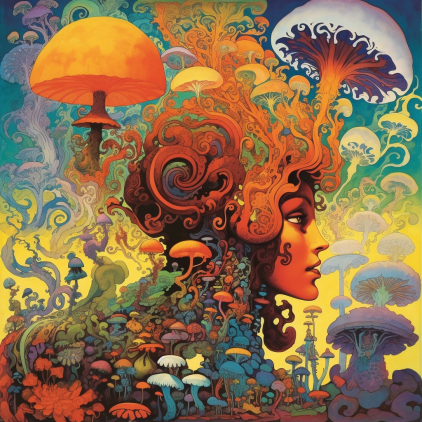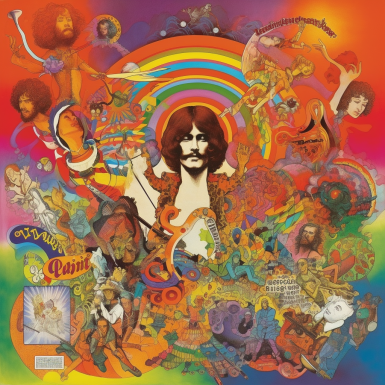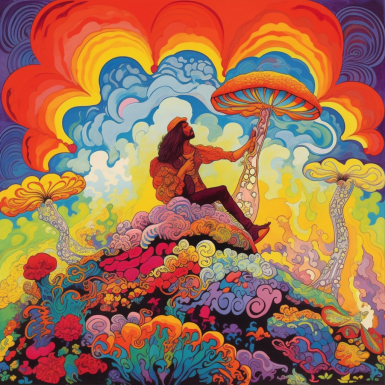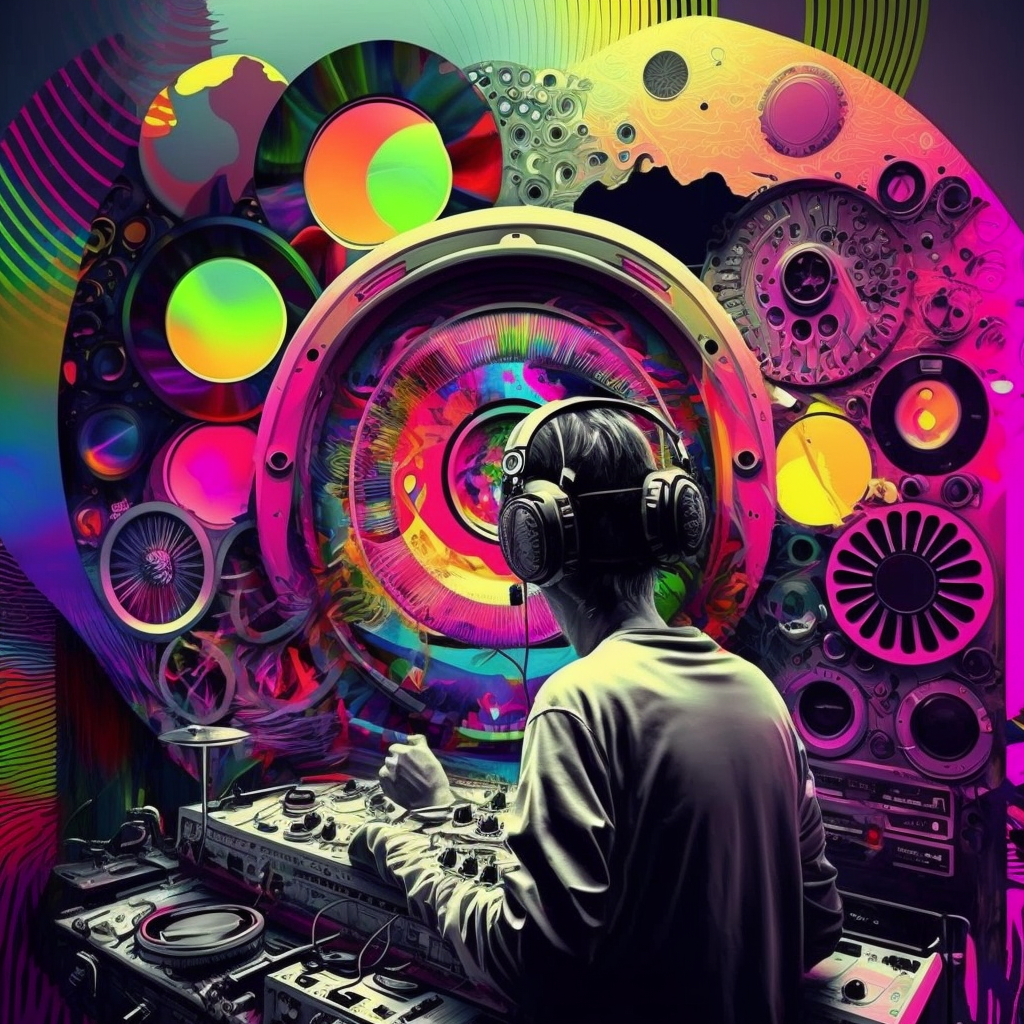
 Uncovering the Most Innovative Psychedelic Rock 70s Albums: A Journey Through the Soundscape
Uncovering the Most Innovative Psychedelic Rock 70s Albums: A Journey Through the Soundscape
The 1970s marked a pivotal era in the history of music, with the emergence of various genres that pushed the boundaries of creativity and experimentation. Among these genres, psychedelic rock 70s music stood out as a sonic revolution that captivated audiences with its mind-expanding sounds, intricate compositions, and a distinctive blend of rock, folk, and electronic elements.
In this article, we embark on a journey through the psychedelic rock 70s soundscape, exploring its origins, key artists, groundbreaking albums, and the lasting impact it has had on the music landscape.
The Birth of Psychedelic Music
The Cultural and Social Context
The 1970s was a period of immense social and cultural change, marked by a desire for liberation, self-expression, and exploration of altered states of consciousness. The counterculture movement, influenced by the psychedelic experiences of the 1960s, paved the way for the birth of psychedelic music. It became a sonic manifestation of the cultural revolution, allowing artists to push boundaries and challenge the conventions of mainstream music that came to fore in the form of psychedelic rock 70s albums and tracks.
Musical Elements and Innovations in Psychedelic Rock 70s Albums
Psychedelic rock 70s albums embraced a wide range of musical elements and innovations. Influenced by the psychedelic rock of the 1960s, artists incorporated elements of folk, blues, jazz, and electronic experimentation into their compositions. Distorted guitars, swirling organs, intricate vocal harmonies, and extended instrumental passages were hallmarks of the genre, creating a hypnotic and immersive sonic experience for listeners.
Key Artists and Albums

Pink Floyd – The Dark Side of the Moon (1973)
Pink Floyd’s magnum opus, “The Dark Side of the Moon,” stands as a pinnacle of psychedelic rock 70s albums. The album seamlessly blends ethereal melodies, introspective lyrics, and groundbreaking production techniques to create an otherworldly sonic journey. Its themes of human existence, mental health, and the passage of time struck a chord with listeners and solidified Pink Floyd’s place as one of the greatest psychedelic bands of all time.
Led Zeppelin – IV (1971)
Led Zeppelin – Led Zeppelin IV (1971) (Full Album)
Led Zeppelin’s fourth studio album, often referred to as “Led Zeppelin IV,” showcased the band’s mastery of blending blues-inspired rock with psychedelic elements. Songs like “Stairway to Heaven” and “Black Dog” became iconic anthems, with their intricate instrumentation, mystical lyrics, and unforgettable guitar riffs. Led Zeppelin’s impact on psychedelic music cannot be overstated, as they paved the way for the genre’s evolution in the 1970s.
The Jimi Hendrix Experience – Electric Ladyland (1968)
The Jimi Hendrix Experience – Electric Ladyland 50th Anniversary Deluxe Edition teaser
While released in 1968, Jimi Hendrix’s “Electric Ladyland” had a profound influence on psychedelic music throughout the 1970s. Hendrix’s virtuosic guitar skills, combined with his experimental approach to songwriting and production, created a sonic landscape that transcended genres. Tracks like “Voodoo Child (Slight Return)” and “All Along the Watchtower” showcased Hendrix’s unparalleled talent and solidified his status as a psychedelic music icon.
The Doors – L.A. Woman (1971)
The Doors – Music Video – L.A. Woman 1971 | HQ
The Doors’ L.A. Woman a masterpiece among psychedelic rock 70s albums is a gritty, bluesy album that explores the underbelly of Los Angeles. With tracks like “The Changeling” and “Riders on the Storm,” this album captures the essence of the psychedelic experience, with Jim Morrison’s haunting vocals and Ray Manzarek’s psychedelic organ work creating an otherworldly atmosphere. L.A. Woman was The Doors’ last album with Morrison, who died just a few months after its release, cementing its place as a timeless classic.
Jimi Hendrix – Band of Gypsys (1970)
Hendrix Band of Gypsys 1970 Side 2
Jimi Hendrix was a master of the psychedelic sound, and Band of Gypsys showcases his unique talent as both a guitarist and a songwriter. With tracks like “Machine Gun” and “Power of Soul,” Hendrix creates a sonic landscape that is both otherworldly and deeply rooted in the blues. This album is a testament to Hendrix’s legacy as one of the greatest musicians of all time.
Grateful Dead – American Beauty (1970)
G̰r̰a̰t̰ḛf̰ṵl̰ ̰ ̰D̰ead– A̰m̰ḛrican Beauty– Full Album 1970
The Grateful Dead were one of the most important bands in the psychedelic rock 70s movement, and American Beauty is a masterpiece that showcases their unique sound. With tracks like “Box of Rain” and “Friend of the Devil,” this album is a mix of folk, rock, and country that captures the essence of the American experience. American Beauty is a testament to the Dead’s legacy, and continues to inspire new generations of fans.
The Rolling Stones – Exile on Main St. (1972)
The R̲o̲lling S̲tones – E̲xile on M̲a̲in St (Full Album) 1972
While not strictly a psychedelic album, The Rolling Stones’ Exile on Main St. is a masterpiece of rock and roll that captures the essence of the psychedelic rock 70s music. With tracks like “Rocks Off” and “Tumbling Dice,” this album is a mix of blues, rock, and country that showcases the Stones’ unique sound. Exile on Main St. is a testament to the band’s legacy, and remains one of the greatest albums of all time.
Santana – Abraxas (1970)
S̲a̲ntana̲ – A̲braxa̲s (Full Album) 1970
Santana’s second album, Abraxas, blends Latin rhythms with psychedelic rock to create a unique sound that’s both danceable and mind-bending. The album’s most famous track, “Oye Como Va,” has become a staple of Latin rock, with its catchy melody and infectious groove. “Black Magic Woman/Gypsy Queen” is a haunting, psychedelic take on a classic blues tune, with Carlos Santana’s guitar work soaring above the band’s rhythmic foundation. Other tracks like “Singing Winds, Crying Beasts” and “Samba Pa Ti” showcase the band’s ability to create atmospheric, transcendent music.
Can – Tago Mago (1971)
C̤a̤n̤–T̤a̤g̤o̤ ̤M̤a̤g̤o̤ ̤1̤9̤7̤1̤ Full Album
Can was a German experimental rock band that combined elements of jazz, electronic music, and psychedelia to create a sound that was truly ahead of its time. Tago Mago, their third album, features tracks like “Paperhouse” and “Halleluhwah” that are both hypnotic and disorienting, with intricate rhythms and abstract lyrics. The album’s centerpiece is the 18-minute epic “Aumgn,” which is a sonic journey through strange, otherworldly soundscapes. Can’s music has been hugely influential on later generations of musicians, and Tago Mago remains one of the most daring and visionary psychedelic rock 70s albums.
Hawkwind – Space Ritual (1973)
H̲awkwi̲nd – S̲pace R̲itual (Full Album) 1973
Hawkwind was a British space rock band that blended hard rock with science fiction themes to create a psychedelic sound that was both heavy and ethereal. Space Ritual, their second live album, features extended jams and trippy visuals that capture the band’s wild, cosmic energy. Tracks like “Born to Go” and “Space Is Deep” are both propulsive and atmospheric, with Dave Brock’s guitar work leading the way. The album also features the spoken word poetry of band member Robert Calvert, whose trippy, sci-fi imagery adds to the album’s immersive, otherworldly feel.
The Lasting Impact of Psychedelic Music in the 1970s
The psychedelic rock 70s albums and tracks left an indelible mark on the music landscape, influencing subsequent generations of artists and shaping the development of various genres. The genre’s emphasis on musical experimentation, introspective lyrics, and the exploration of altered states of consciousness laid the foundation for progressive rock, art rock, and other experimental genres that emerged in the following decades.
Journey Through The Transformative Era Of Psychedelic Rock 70s – Where Unbridled Creativity And Artistic Freedom Thrived

The 1970s saw a rise in psychedelic rock music that captured the spirit of a generation seeking self-expression and liberation. Key psychedelic rock 70s albums from Pink Floyd, Led Zeppelin, and Jimi Hendrix continue to resonate with audiences today, as their compositions and innovative techniques solidify their influence and inspire generations of musicians.
Psychedelic music’s experimental nature, introspective lyrics, and captivating soundscapes laid the groundwork for the evolution of various genres. Its impact extends far beyond the decade, with elements of psychedelia woven into the fabric of contemporary music. This era stands as a testament to the power of music to transport us, evoke emotions, and challenge societal norms, reflecting the unbridled creativity and artistic freedom that continue to redefine music today.
This article provides a comprehensive overview of this transformative era, exploring its origins, key artists, and groundbreaking albums. Whether a seasoned fan or newcomer to the genre, this exploration deepens appreciation for the beauty and innovation that emerged from the psychedelic soundscape of the 1970s.
Categorised in: Psychedelic



